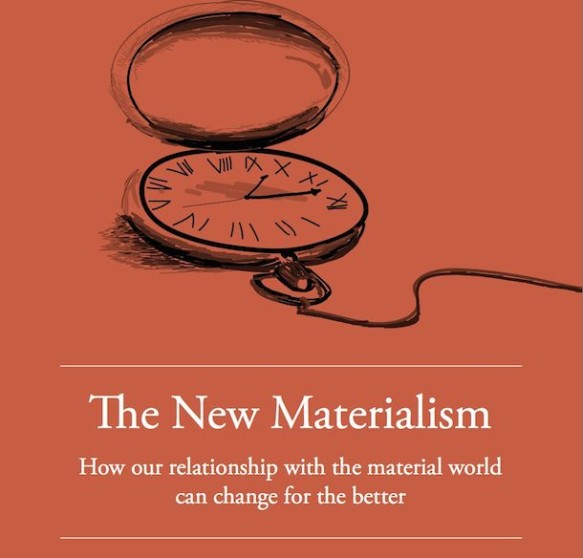The New Materialism
Many of us have a very conflicted relationship with our stuff. On the one hand, we want a lot less of it and think the world in general could use a major ‘edit’ in order to save planet and collective sanity alike. On the other hand, we appreciate the good stuff. We like using it, the things we can do with it or the memories it holds. We might even say it makes our lives better. Sometimes, it’s hard to articulate and reconcile these seemingly contradictory perspectives–something that a website/movement called “New Materialism” attempts to do. As the name implies, NM does not eschew material goods. Rather, it tries to forge a deeper connection with the stuff we have and invite into our lives.
The easiest way of thinking about the NM orientation to stuff is like a loving relationship. If our stuff was something we loved, would we throw it away carelessly? Would we stick it in storage lockers? Wouldn’t we try to spend as much time with it as possible? Wouldn’t we care for it as much as possible because we value its life? They write:
Far from eschewing materialism, a deeper understanding of humankind’s place in a living world of materials suggests the need and opportunity for a different kind of love affair with ‘stuff’ – a long-term relationship of appreciation, slow pleasures, care and respect. That invites re-writing the relationship manual for the objects we use. Far from suggesting abstinence and austerity, embracing a new materialism could have profoundly positive effects on our own well-being, that of the communities we live in and the Earth we are part of.
At the center of NM is its manifesto, which sets forth a set of ideals by which we can orient our relationship to stuff.
- Liking ‘stuff’ is okay, healthy even-–we can learn to love and find pleasure in the material world
- Wherever practical and possible develop lasting relationships with things by having and making nothing that is designed to last less than 10 years
- Get to know things – before you acquire something, find out at least 3 things about it
- Love stuff – mend, maintain and re-use things until it is no longer possible, then recycle them
- Get active – only acquire something new if you are also learning a new, useful skill
- Share – look at all your things, think about what your friends might need or could benefit from, and share at least one thing a week
Also, in a nod to 18th Century political activism, NM has its own heady pamphlet, which outlines the history of materialism for the last couple hundred years and the future as they see it–a model that is characterized by “more active production, making, adapting, mending, sharing and all the ‘re-s’ such as: re-use, recycle, re-love, re-purpose…[which will provide] far more potential for novelty and pleasure,” than our current throwaway culture.
The manifesto is well written and researched and definitely worth a read. And while UK focused, the content and resources are useful to almost any region of the world.
Few things highlight the need for a new relationship to materialism like the holidays. At every turn, we are encouraged to participate and subscribe to the model of new + more = better–a model that drives many of us into debt and overwhelm and the planet into tailspin. New Materialism offers one possible way forward, which is characterized by connection, appreciation and care for the things we use and possess.





